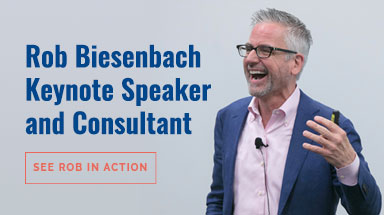 (A version of this post originally ran as a guest post on the Spin Sucks blog.)
(A version of this post originally ran as a guest post on the Spin Sucks blog.)
Study after study points to the power of storytelling to transform our communications, help us move and persuade audiences and get more of what we want out of life.
I find people are either totally intimidated by the notion of telling a story or they’re overconfident, passing off mere “happenings” as full-fledged stories. So allow me to demystify and clarify the storytelling process so you can learn to find, shape and tell better stories.
What Is a Story?
I took writing classes at Chicago’s famed Second City training center, birthplace of comedy legends from John Belushi to Tina Fey and incubator for everyday schmoes like me.
They taught us a very simple structure: a story is a character in pursuit of a goal in the face of a challenge or obstacle. How that character resolves that challenge is what keeps us interested.
Now there are certainly other elements to stories, but these are the three building blocks. (Besides, three is just easier to remember. At a recent speech I gave, someone said he was taught eight ingredients for storytelling – he couldn’t recall any of them.)
Why Is Story Structure So Important?
All our lives we’re immersed in stories. Americans spend $10 billion a year going to the movies, $15 million on video games and 35 hours a week watching TV. So storytelling structure is engrained in our consciousness. In fact, our brains are actually hardwired for stories.
As a result, we naturally respond to their familiar rhythms and patterns. Defy this structure and you risk confusing your audience and diminishing your impact.
Look to Hollywood
Let’s see how this structure plays out. In the hit show How I Met Your Mother, our character is Ted and his goal is to meet the woman of his dreams. He faces a variety of obstacles, from bad choices to unrealistic expectations. As they say in the business, hijinks ensue.
Or one of my favorite movies, The Fugitive. Our character is Dr. Richard Kimble, who’s wrongly accused of killing his wife. His goal is to find the real killer. The obstacle is the federal marshal sworn to bring him to justice. Can the wily physician outsmart the authorities? Stay tuned!
Practice this structure when watching your favorite shows. The more you do it, the more easily you’ll be able to use it.
Drilling for Stories
I believe everyone has a vast reserve of untold stories just waiting to be tapped. Sometimes those reserves are close to the surface, and other times you have to drill deep.
Say your company has an internal initiative to promote teamwork or quality. That’s your goal. Think about the obstacles that get in the way of employees’ achieving the goal – outdated technology, faulty processes, etc. Then go looking for characters – everyday heroes within the organization who have a great story to tell about overcoming those hurdles.
Or you can look among your customers for stories. What are their goals and challenges? Maybe your product is the hero, maybe it’s one of your people or maybe it’s the customer herself.
The key is to find great characters – people who are relatable and articulate. That’s something you can’t program or plan for. You just have to go out and dig until you find the right one.
Priming the Pump With Emotion
And when you’re interviewing potential subjects, you’ll want to prime the pump. Tap into those emotions that make stories so powerful. Don’t just talk about what they do, find out why they do it. Are they proud of their work? Why? What makes them jump out of bed in the morning? How does their job fit into the big picture?
Don’t be afraid to get personal. Ask about their heroes, their passions, their family or children. The point is to get your storytellers to relax, open up and speak from the heart.
Estela and The Candy Factory
That’s how I had a breakthrough with a real-life character named Estela. (I tell this story often, but it’s one of my favorites — really powerful.)
Estela was responsible for inspecting packages of gum at a candy factory. I asked her how she maintains quality (the goal) in the face of her everyday routine on the production line (the challenge).
She showed me her processes and checklists and it was impressive, but it didn’t grab me. So I asked about her kids and she lit up. “They call me the Candy Lady,” she beamed. She pointed to a code on one of the packages that tells you when and where the product was made.
Here’s the kicker: her kids can read the code. So whenever they go to the store, they run to the candy aisle, turn over the packages and say, “This is mommy’s gum! My mommy made this gum.” The bottom line: it’s good enough for your family because Estela is there every day making sure it’s good enough for hers.
Unleash the Power of Storytelling
Now that’s a story. It’s got a character we can relate to (a mom). It carries emotional weight. And it elevates an everyday issue like quality from mere datapoints to the kind of universal values that connect us all – pride, family and love.
In the end, nobody cares about programs and processes – they care about people and their struggles. That’s why great stories with strong characters will always go further than facts and figures alone.
So make storytelling a part of your everyday communications. Use stories in presentations, job interviews, meetings, memos, videos, emails, blog posts. Anytime you’re trying to persuade and convince people, a story will go a long way toward making it happen.




